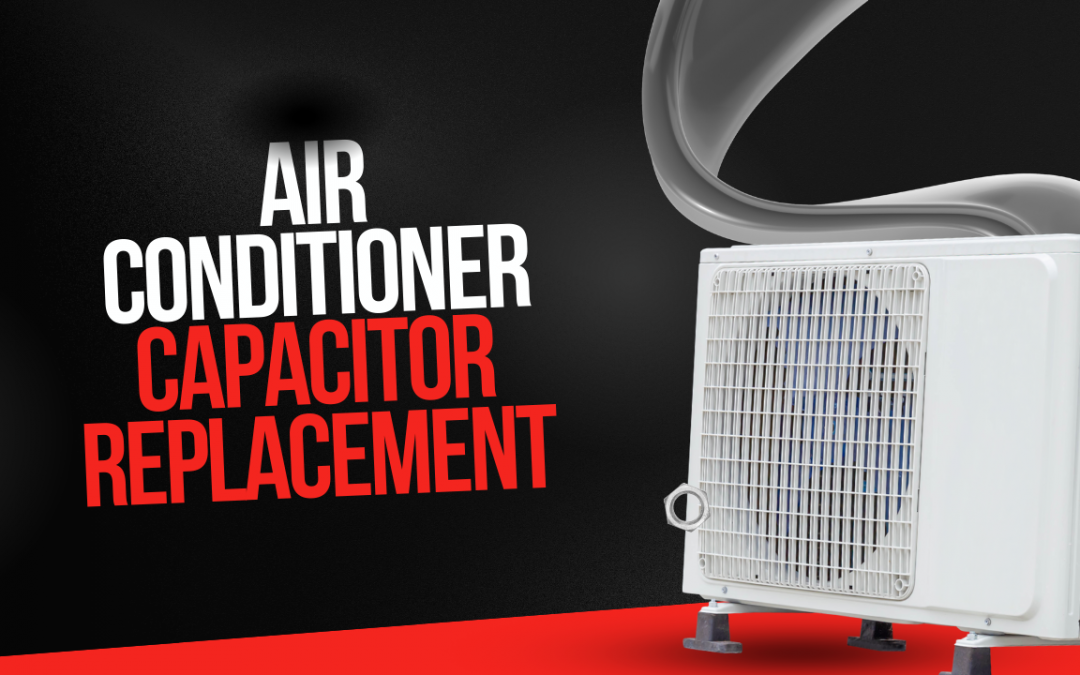Understanding the Role of a Capacitor
Before getting more into the actual replacement process, it’s important to have a better understanding regarding what a capacitor actually does in an air conditioning system. A capacitor stores electrical energy and releases it when needed to start the compressor and the fan motor. Basically, it provides the initial jolt of electricity that is needed to start the air conditioner’s components. There are generally two types of capacitors in an air conditioning system itself: the start capacitor and the run capacitor. The start capacitor helps to provide the power to start the motor, while the run capacitor is designed to keep the motor running as smoothly as possible.
When a capacitor fails, the symptoms can include the air conditioner struggling to start, failing to blow cold air, or not working at all. In some cases, a failed capacitor may even cause the air conditioner to overheat or damage other components of the system, making timely replacement crucial.
Replacing an Air Conditioner Capacitor
Replacing an air conditioner capacitor in Las Cruces is a task that can be completed with the right tools and a basic understanding of electrical components. However, it’s important to exercise caution, as working with electrical components can be dangerous. Here’s a step-by-step guide to replacing a capacitor:
- Safety First: Always start by turning off the power to the air conditioning unit. This can typically be done by switching off the circuit breaker that controls the unit. To ensure that no residual power remains in the system, use a voltage tester to confirm that the unit is completely de-energized.
- Locate the Capacitor: The capacitor is usually located in the outdoor unit of the air conditioner, near the compressor. You may need to remove a metal panel to access it. Once located, take note of the capacitor’s specifications, which are usually printed on the side. This information is crucial when purchasing a replacement capacitor.
- Discharge the Capacitor: Even after the power is turned off, the capacitor may still hold a charge. To discharge it, use an insulated screwdriver to bridge the terminals. This will safely release any stored electricity.
- Remove the Old Capacitor: Carefully disconnect the wires connected to the capacitor, noting their placement for reinstallation. Most capacitors are held in place with a metal strap or bracket that can be loosened with a screwdriver.
- Install the New Capacitor: Place the new capacitor in the same position as the old one, secure it with the metal strap, and reconnect the wires to their appropriate terminals. Ensure that all connections are tight and secure.
- Test the Unit: Once the new capacitor is installed, turn the power back on and test the air conditioner to ensure it is operating correctly. If the unit starts and runs smoothly, the replacement was successful.
How to Replace AC Capacitor for Fan
The process of replacing a capacitor in a fan is similar to that of an air conditioner, although typically simpler. The capacitor in a fan is responsible for helping the motor start and maintain a consistent speed. Here’s a brief guide to replacing a fan capacitor:
- Turn Off the Power: As with the air conditioner, safety is paramount. Ensure the fan is unplugged or the power is turned off at the circuit breaker.
- Access the Capacitor: The capacitor is usually located inside the fan housing or near the motor. Disassemble the fan housing carefully to locate the capacitor.
- Discharge the Capacitor: Use an insulated screwdriver to discharge any residual electricity by bridging the terminals.
- Replace the Capacitor: Disconnect the wires, remove the old capacitor, and replace it with the new one. Reconnect the wires securely and reassemble the fan.
- Test the Fan: After reassembly, turn the fan back on to ensure it is working properly.
Can I Replace AC Capacitor Myself?
Replacing a capacitor, whether it be in either an air conditioner or a fan, is something that can be done by someone with basic electrical knowledge and the right tools. On the other hand, it’s important to keep in mind that there are risks involved, especially with high-voltage components in an air conditioner. If you aren’t in any way comfortable working with electrical systems, or if you are unsure of your ability to safely complete the task, it is highly advisable to seek the assistance of a licensed professional.
In Las Cruces, there are numerous HVAC professionals who can quickly and safely replace a capacitor, ensuring your air conditioning system is back up and running with minimal downtime. Given the extreme temperatures that Las Cruces can experience, having a reliable air conditioning system is essential, and professional help may be the best option to avoid any potential risks.
Replacing an air conditioner or fan capacitor is a rather straightforward task; however, it also requires both caution and attention to detail. In a hot environment such as Las Cruces, making sure that your air conditioner is properly working is vital for comfort and safety. Whether you choose to replace the capacitor yourself or hire a professional, understanding the process can help you make an informed decision and keep your home cool during the hottest months of the year.

